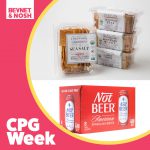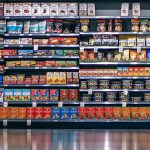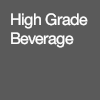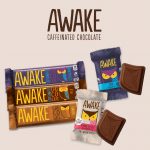Science Panel Calls For Makeover of Allergy Warning Labels
It’s like playing Russian Roulette. With food. At least, that’s the opinion of one scientist who’s part of a panel that’s pushing for better labeling of food made in facilities that can potentially contaminate other products with common allergens.
Stephen Taylor and his fellow panelists, members of the National Academies of Sciences, Engineering and Medicine, issued a report in November calling on the FDA to help allergen-aware consumers better understand the risks arising from consuming food manufactured in plants that also make products containing common allergens like eggs, nuts, or milk.
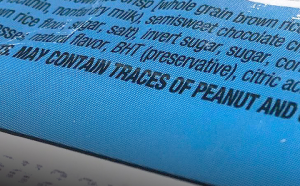
The labeling knowledge gap largely lies in foods that are presumed to be free from those allergy-causing ingredients. Taylor, a University of Nebraska food scientist, told NOSH that foods intentionally made with allergy-prone ingredients must be labeled to FDA standards. However, he said because warnings about trace elements of those allergy-provoking ingredients, like eggs or nuts, are voluntary and have no standardized language, it is confusing and dangerous for customers.
“There are probably 1,000 different variations of the theme and the wording, and even the use of these statements and it does not necessarily reflect the risk of the product because it doesn’t have to be risk based,” Taylor told NOSH. “Consumers rely on these package label statements to determine whether the product is safe for them or their allergic child to eat, and that is an awfully large responsibility for the food industry to have.”
To help dispel confusion, the panel recommended that the FDA regulate the labeling to clearly state the level of risk for contamination. Taylor added that more research needs to be done on how much of a “trace” of peanuts, eggs or milk most people with allergies can tolerate in order to establish a standardized criteria and language to communicate that to consumers.
The Grocery Manufacturers Association told NOSH in a statement that it supports the recommendations “to establish threshold limits for products that use a ‘may contain’ allergen precautionary statement.”
“Our members are committed to ensuring that food-allergic consumers have the information they need on the food label to make informed choices about the safety of the products they purchase,” the statement said.
Taylor said that the FDA is reviewing the report, but the panel wasn’t sure if the agency would take any action. He added that he thinks the industry will want to be on board with a unified warning label, but only if the FDA leads the charge.
“Otherwise, companies, trying to agree and work together on the criteria of it, will say that’s way too hard,” he said.
Some brands, like superfood energy bar company R.e.d.d., are already supportive of the recommendation. Founder Alden Blease told NOSH the company is for the allergen labeling initiative because he thinks “we all have the right to know what’s in our food.”
“[It] will certainly mean new printing plates for all the producers out there so it’s a cost we all will have to come to turns with, but it’s something we are doing anyway with new nutrition packs label,” he said. “Transparency is a cost worth paying for.”

